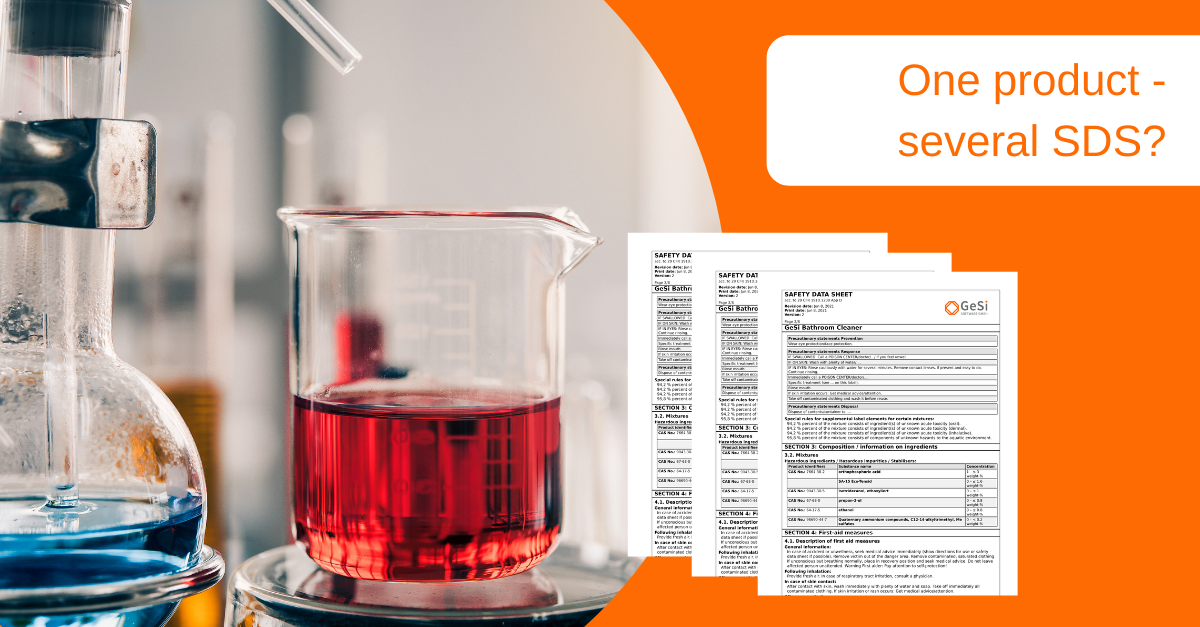One product, several SDS – does that make sense?
Safety data sheets (SDS) contain, among other things, the product name, a traceable version tracking and sometimes also an article number. This may give the impression that a hazardous substance (pure substance or mixture) has one single safety data sheet. However, depending on the circumstance, this may not be the case.
Through our work with our clients, we are familiar with many use cases. In this article, I highlight some scenarios where it makes sense to maintain multiple safety data sheets for a hazardous substance and the challenges that may arise.
The product name
The product name of mixtures can be chosen by the manufacturer. When it comes to pure substances, the situation is a bit different. Here, the so-called product identifier, which specifies the name, must be used.
According to the REACH Regulation, a single safety data sheet may be prepared for a product with several trade names. In the section “Other names” of the SDS, all names under which this product is known are then listed. [1]
One might think that it is not necessary to prepare several safety data sheets for one or similar formulations. However, these products belong together or are even identical. One does not always want to disclose this, at the latest when the product is resold under a different name.
So, both manufacturers and distributors may have an understandable interest in producing several safety data sheets for the same formulation in order to provide information about different product names separately.
Jurisdiction and special requirements
If hazardous substances are distributed in different jurisdictions, it is usually necessary to prepare different safety data sheets. In addition, individual nations may have special requirements for the SDS that are not relevant for other countries.
Here, one could try to accommodate national information in section 15 for the different countries. This also has implications for the presentation of limit values in section 8 and other consequences.
Challenges
One of the challenges is that version tracking must be guaranteed for all variants of the product safety data sheet. But not every correction or update run will affect each of the individual safety data sheets.
In this case, a distinction must be made as to when it is worth creating several safety data sheets and when it makes more sense to summarise them in one.
You can count on support via special safety data sheet software (such as GeSi³) to generate different SDS for different nations and jurisdictions with as little effort as possible.
Sources:
[1] Regulation Nr. 1907/2006 (REACH)

